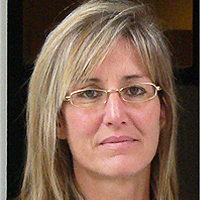The surrey county lunatic asylum-an overview of some of the first admissions in 1863-1867
Published on: 31st May, 2022
In the 19th Century in much of Western Europe and North America the number and size of asylums increased hugely. In London, there was a wave of new asylums built in response to the 1808 County Asylums Act and the 1845 Lunacy Act, which required publicly funded care for those deemed mentally unwell. One such asylum was the Surrey County Lunatic Asylum which was built on the grounds which now house Springfield University Hospital in South West London.This paper describes the admission records from Surrey County Lunatic Asylum, between 1863-1867, from information stored in the London Metropolitan Archives. Although the terminology is different from that of today’s, the picture the records paint is of an institution aiming at recovery rather than long-term incarceration which can be how asylums are now remembered. This more nuanced view is starting to be discussed more in public conversations about the topic. The optimism this may imbue is tempered by the shocking number of patients who died within the institution.
Fregoli syndrome in schizophrenia: about a case report
Published on: 31st May, 2022
A Fregoli syndrome, just like Capgras Syndrome, Double Subjective Syndrome, and Inter metamorphosis Syndrome, belongs to the group of delusion misidentification syndromes. It is a rare neuropsychiatric pathology that could affect the brain with repercussions on behavior. It is the belief that a familiar person is disguised as a strange person by taking a different physical appearance but remains the same person psychologically. This entity has heterogonous etiologies, occurring mainly in the setting of organic diseases, affective disorders, or schizophrenia. In this article, we proposed to expose a case of a schizophrenic patient who developed Fregoli syndrome.
The role of cognitive distraction in sexual dysfunction in female medical resident doctors
Published on: 31st May, 2022
Introduction: Studies have shown a high prevalence of sexual dysfunction in Medical residents. Psychological, interpersonal, and sociocultural factors play an important role in sexual vulnerability. In addition, distraction or interference in the cognitive process of the erotic stimulus plays an important role in the development of sexual dysfunction. The aim of our study was to determine the prevalence of sexual dysfunctions among a sample of married female medical resident doctors and to explore its relation with cognitive distraction during sex.Subjects and methods: This was a cross-sectional study, which was carried out in October 2017 with 70 married female medical resident doctors. We used the Female Sexual Function Index (FSFI) for sexual functioning assessment and the cognitive distraction during sex scale. Results: The mean age of women was 30.52 years. They had been married for 6.04 years on the mean. The majority (74%) had children. According to the FSFI, 40% of resident doctors had sexual dysfunction. The mean cognitive distraction during sex score was 4.37.In our study, women with female sexual dysfunction reported significantly lower sexual desire score = 3.2 vs. 4.1 and p = 0.03) and arousal (score = 3.è vs. 4.7 and p = 10-3), decreased lubrication (score = 3.8 vs. 5.1; p = 10-3), less sexual satisfaction (score = 3.9 vs. 5.8; p = 10-3)and higher orgasm difficulties (score = 3.4 vs. 5.1; p = 10-3). Yet, our results highlighted that women with female sexual dysfunction presented significantly more cognitive distraction during sex (score = 3.9 vs. 4.6; p = 0.03). Conclusion: According to our study, it appears that the prevalence of FSD in medical resident doctors is considerable. Besides, intrusive thoughts and cognitive distraction during sexual intercourse are importantly associated with sexual functioning. Therefore, several measures should be implemented in this population to prevent or act on these factors.
Collection, isolation and characterization of Sclerotinia sclerotiorum, an emerging fungal pathogen causing white mold disease
Published on: 31st May, 2022
OCLC Number/Unique Identifier: 9526132489
Sclerotinia sclerotiorum (Lib.) de Bary caused white mold disease with a wide distribution worldwide. For the control of the disease, it is fundamental to understand the identification, morphology, and genetic diversity of the fungus. The objective of this study was to collect and characterize S. sclerotiorum isolates from different regions of the country. The characteristics evaluated for the mycelium characterization were: the time required for the fungus to occupy the plate; density of the formed mycelium; coloration of the colonies and mycelia growth rate. Sclerotia assessments were based on the time for the formation of the first sclerotia total number formed per plate, the format of distribution in the plate, and the shape of the sclerotia formed by the isolates. Variability was observed for colony colour, type of growth, the diameter of mycelia growth, sclerotia initiation, and number and pattern of sclerotia formation among the isolates. The evaluated populations presented wide variability for the cultural and morphological characteristics, being predominant in the whitish colonies with fast-growing habitats. The majority of isolates produced a higher number of sclerotia near the margin of the plates and with diverse formats. Phylogenetic analysis revealed that the isolates belonged to a similar group of publicly available S. sclerotiorum and were dissimilar from the group of S. minor, and S. trifolium and distinctly differ from S. nivalis group. The present study is the first evidence for morphological and genetic diversity study of S. sclerotiorum in Bangladesh. Therefore, this report contributes to more information about the morphological and genetic diversity of S. sclerotiorum and can be useful in implementing effective management strategies for the pathogen which caused white mold disease.
Importance of BLUP method in plant breeding
Published on: 31st May, 2022
OCLC Number/Unique Identifier: 9526112251
Introduction: The most desirable linear neutral prediction (BLUP) is a standard method for estimating the random effects of a hybrid model. This approach was originally developed in animal breeding to estimate breeding values and is now widely used in many fields of research. The main practical advantages of using REML/BLUP are: It allows the comparison of individuals or species over time (generation, year) and space (location, block). Possibility of simultaneous correction of environmental effects, estimation of variance components, and prediction of genetic values.The best BLUP prediction method, which estimates the averages with high accuracy, especially in mixed models, is also used to evaluate multi-environment experimental data (MET).Blup is one method is statistical. Pedigree-based blup method.Materials and methods: The BLUP method achieves this goal by combining phenotypic data and information on pedigree relationships through an index, known as family index selection. This index, which is estimated based on the coefficient of intra-class correlation, exploits the relationships of individuals within a family compared to other families in the population.Results: The results: show that BLUP has good prediction accuracy compared to other methods. Pedigree-based BLUP method can increase selection yield in production-related traits in P. zonale or shelf life of D. caryophyllus L.
Effects of animal manures on growth and yield of maize (Zea mays L.)
Published on: 27th May, 2022
OCLC Number/Unique Identifier: 9524460916
A spatial survey to investigate the effects of the use of poultry, sheep, and horse manure on intermediate harvests and maize growth restrictions was conducted on the research farm of Woillu Woreda, Ethiopia during the 2017 planting season. Treatment was performed with Randomized Complete Block Design (RCBD) with three responses. The measured variables were plant length, number of leaves, location indicator (LAI), stem girth, and grain yield obtained. The data collected is subject to variance analysis (ANOVA). Methods were categorized using LSD at a 5% significance level.The results obtained showed that the growth and yield of Maize were significantly lower in treatment control, indicating that the manure used in the study, especially the chicken manure, had a positive effect on the performance and yield of Maize. The results also revealed that poultry-cleaned sites offer the highest number of leaves per plant, the thick stem, the highest LAI, and the grain yield of 5.7 t/ha. In comparison, a small grain yield of 4.2 t/ha was obtained with the application of horse manure. Sheep manure produced 3.9 t/ha of maize and a small yield of 2.8t/ha of maize was recorded in the control management. Based on the results of the study it can be found that chicken manure seems to promote the growth of maize yield. Therefore, it should be recommended for maize growers in the study area.
The value of bone scans to predict survival time in patients with diagnosed prostate cancer: single-center retrospective study
Published on: 25th May, 2022
Objective: In this study, we investigated the significance of the bone scan results as a prognostic factor to predict survival by comparing age, serum PSA level, and Gleason score. Methods: Medical records of 313 patients were retrospectively examined. 265 patients of 313 were included in the study. Results: 202 (76%) patients of 265 were still alive and 63 (24%) patients of 265 were dead because of prostate cancer. Patients’ mean estimated survival times for those with, without, and suspected bone metastases were 47.4 ± 5.4 months, 159.1 ± 8.6 months, and 71.1 ± 14.4 months, respectively (p = 0.0001). While the mean estimated survival time of < 70 years patients old was 137.1 ± 9.4 months, the mean estimated survival time of ≥ 70 years old patients was 78.2 ± 5.0 (p = 0.031). 243 patients with known PSA values, of those whose PSA levels were < 10 ng/ml, between 10-20 ng/ml, between > 20-50 ng/ml, and > 50 ng/ml, the estimated mean survival time was 106.9 ± 4.2 months, 118.1 ± 14.8 months, 87.6 ± 7.4 months and 51.7 ± 6.2 month, respectively and a significant difference was determined (p = 0.0001). For patients whose Gleason scores were < 7, 7,and >7, the mean estimated survival time was 167.5 ± 10.8 months), 86.8 ± 5.5 months, and 61.0 ± 5.4 months, respectively, and a significant difference was determined (p = 0.0001). Conclusion: We identified that the estimated mean survival time of the patients who had bone metastases, had a high level of PSA, had a high level of Gleason score, and were older than 70 years old was shorter than other groups. We concluded the most important prognostic factor affecting survival time independently was the finding of metastasis detected in bone scintigraphy.
Incidental discovery of a pancreatic lipoma: a case report
Published on: 24th May, 2022
Pancreatic lipoma is a benign, mesenchymal-derived tumor. It is an uncommon entity that is rarely reported. The diagnosis is usually made on a CT scan or MRI. We present a case of a pancreatic lipoma incidentally discovered on imaging in a 53-years old patient presenting for acute cholecystitis.
Nano-silica from kaolinitic clay used as adsorbent for anionic and cationic dyes removal: linear and non-linear regression isotherms and kinetics studies
Published on: 24th May, 2022
The increasing occurrence of wastewaters associated with industrial development has begotten a permanent search for new and more efficient techniques for the removal of hazardous substances such as heavy metals and dyes. The use of natural and available resources to develop improved and sustainable commodities for this purpose remains crucial and is among promising emerging green technologies for water treatment. It offers the gradual shifting of hazardous industrial chemicals precursors to the abundant non-metallic mineral resources that receive an added value. This work investigated the uptake capacity by the adsorption process of methylene blue (MB) and azocarmine G (AG) onto nano-silica synthesized from kaolinite clay. The effects of contact time (0-30 min), the adsorbent dosage (5-100 mg), the initial pH of the solution (1-11 for MB and 1-7 for AG), and the initial dye concentration (5-50 mg/L) were studied. The selected conditions to carry out kinetic and isotherm adsorption experiments were: 15 mins, 20 mg, 11 for MB, 1.01 for AG, and 50 mg/L. Four adsorption isotherms and three kinetic models were used to model the adsorption data thanks to linear and non-linear regression methods. From the obtained results, the Freundlich isotherm model fitted well the adsorption phenomenon while the pseudo-second-order kinetic model described well the adsorption mechanism. Furthermore, the free energy of adsorption was similar for the two absorbents, 0.71 kJ, pointing physisorption as the dominant adsorption mechanism. The optimum MB and AG uptake were respectively 13.8 and 36.1 mg/g. Conclusively, the nano-silica represents a potentially viable and powerful adsorbent whose use could lead to a plausible improvement in environmental preservation.
Immunohistochemical expression of p53 and Fox A1 in epithelial ovarian cancer
Published on: 20th May, 2022
Background: Ovarian cancer (OC) is the fifth cause of cancer mortality in females. There were an estimated 300,000 new cases of OC diagnosed worldwide in 2018, corresponding to 3.4% of all cancer cases among women. The high mortality rate of OC attributed to asymptomatic growth of the tumor leads to its diagnosis at advanced stages. About 85% - 90% of OC are epithelial including serous, endometrioid, clear cell, and mucinous carcinoma. Aim: To study the immunohistochemical (IHC) expression of FOXA1 and p53 in epithelial OC and its association with prognostic indicators such as age, tumor size, stage, grade, and histological type.Materials and methods: The study included 52 cases with EOC from the pathology department, faculty of medicine, Aswan, and Sohag Universities, in the period from January 2017 to December 2019. This study involved 52 patients with OC and a median age of 53 years. Different histological types were included as 37 serous, 12 mucinous, 1 case endometroid 2 cases clear cell OC. The study cases were classified into 22 Grade I, 16 Grade II, and 20 Grade III. About 22 cases were at stage I, 9 at stage II, 11 at stage III, and 10 at stage IV. Tissue sections were stained using the IHC technique with FOX A1 at a dilution of 1:100 and p53 at 1:100. Results: A statistically significant correlation was found between FOX A1 expression and advanced patient's age, high grade, advanced stage, ruptured capsule, and ascites, regardless of tumor laterality. No significant association was found between p53 immunoexpression and the same clinic-pathological parameters although p53 was associated with serious type. Conclusion: FOXA1 immunoexpression in EOC is considered a poor prognostic factor in EOC. FOXA1 could be a potential therapeutic target and prognostic marker in EOC.




